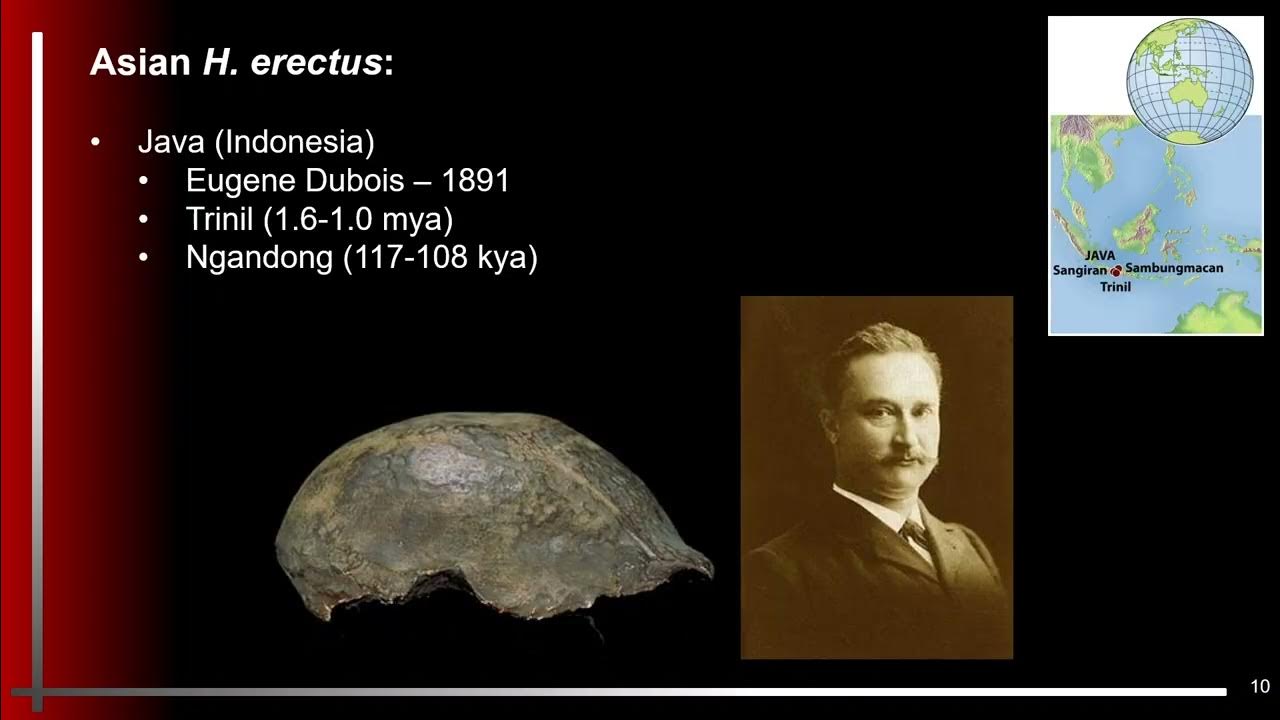ANTH102 Lecture12
Summary
TLDRIn this lecture, the professor explores the discovery of Homo naledi, a recently identified hominin species. Found in the Rising Star Cave in South Africa, the remains of at least 15 individuals date back 236,000 to 335,000 years. Homo naledi exhibited a mix of primitive and modern traits and possibly engaged in complex social behaviors like burial practices. The discovery of engraved markings in the cave adds further intrigue. The findings challenge the perception that humans are the only species capable of sophisticated cultural behaviors, raising important questions about our shared evolutionary history.
Takeaways
- 📚 Keep up with assigned readings and complete all assignments before due dates.
- 🦴 Homo naledi is a newly discovered species, identified from remains found in the Rising Star Cave system, South Africa.
- 🧠 Homo naledi exhibited both primitive and derived physical traits, with similarities to Australopithecines in the torso and modern Homo in the lower limbs and brain structure.
- 👣 Homo naledi was bipedal, about 5 feet tall, and had a smaller brain size (465-560 cc) compared to Homo erectus.
- 🕵️ The remains of Homo naledi were found in a remote cave area, suggesting possible burial practices, which may indicate complex social behaviors.
- 🔥 The burial site, deep in the cave, implies the use of fire for navigation in dark areas, indicating advanced knowledge and tool use.
- ⚒️ Engravings discovered on a stone pillar near the cave entrance in 2022 suggest symbolic or communicative behaviors by Homo naledi.
- 🧱 The engravings form shapes such as squares, triangles, and crosses, hinting at intentional creation rather than natural formations.
- 🤔 The discovery of Homo naledi challenges the notion that humans are the only hominins with complex social and cultural behaviors.
- 🌍 These findings push us to reconsider our perceived uniqueness and recognize that other hominin species might have also exhibited sophisticated social behaviors.
Q & A
What is Homo naledi, and where were its remains discovered?
-Homo naledi is a recently discovered species of the genus Homo, whose remains were found in the Rising Star Cave system in South Africa, specifically in the Dinaledi and Leseti Caves.
How many Homo naledi individuals were discovered, and how old are the remains?
-The remains of at least 15 individuals were discovered, and they have been dated to between 335,000 and 236,000 years ago.
What are some key physical characteristics of Homo naledi?
-Homo naledi exhibited a mix of primitive and modern traits. Their shoulders, hips, and torso were primitive, resembling Australopithecines, while their lower limbs and cranium had more derived, modern features. They were about 5 feet tall, bipedal, and had smaller brains compared to Homo erectus, but with similar brain structures to modern humans.
What evidence suggests that Homo naledi may have buried their dead?
-The remains of Homo naledi were found deep in a cave with no evidence of predation or water relocation. This suggests that the remains may have been deliberately placed in the cave, indicating intentional burial, a significant social behavior.
What is the significance of the engravings found in the Rising Star Cave?
-The engravings, discovered in 2022, consist of linear features forming squares, triangles, and crosses. They are believed to have been created by Homo naledi, further suggesting their capacity for symbolic or cultural expression.
How does the discovery of Homo naledi challenge our understanding of human uniqueness?
-The discovery of Homo naledi's potential for complex social behaviors, such as intentional burial and engraving, forces us to reconsider the idea that modern humans are the only hominin species with such sophisticated behaviors. This challenges our ethnocentric views of human uniqueness.
How does the brain size of Homo naledi compare to other hominin species?
-Homo naledi's brain size ranged from 465 to 560 cubic centimeters, which is smaller than Homo erectus, whose brain size ranged from 700 to 1,250 cubic centimeters. However, Homo naledi's brain had a shape and structure similar to modern humans.
Why is the location of the Homo naledi remains significant?
-The remains were found in an inaccessible, dark chamber of the cave with no evidence of occupation or natural light. This suggests that the placement of the remains was deliberate, potentially representing the earliest known example of hominins burying their dead.
What cultural behaviors does Homo naledi's discovery suggest?
-The evidence of potential burial and the presence of engravings suggest that Homo naledi may have engaged in complex cultural behaviors, such as symbolic expression and social rituals related to death.
How does the discovery of Homo naledi contribute to the field of anthropology?
-The discovery of Homo naledi provides significant insights into the diversity of hominin species and their behaviors, enriching our understanding of human evolution. It highlights that other hominins may have exhibited complex social behaviors long before modern humans.
Outlines

このセクションは有料ユーザー限定です。 アクセスするには、アップグレードをお願いします。
今すぐアップグレードMindmap

このセクションは有料ユーザー限定です。 アクセスするには、アップグレードをお願いします。
今すぐアップグレードKeywords

このセクションは有料ユーザー限定です。 アクセスするには、アップグレードをお願いします。
今すぐアップグレードHighlights

このセクションは有料ユーザー限定です。 アクセスするには、アップグレードをお願いします。
今すぐアップグレードTranscripts

このセクションは有料ユーザー限定です。 アクセスするには、アップグレードをお願いします。
今すぐアップグレード5.0 / 5 (0 votes)






